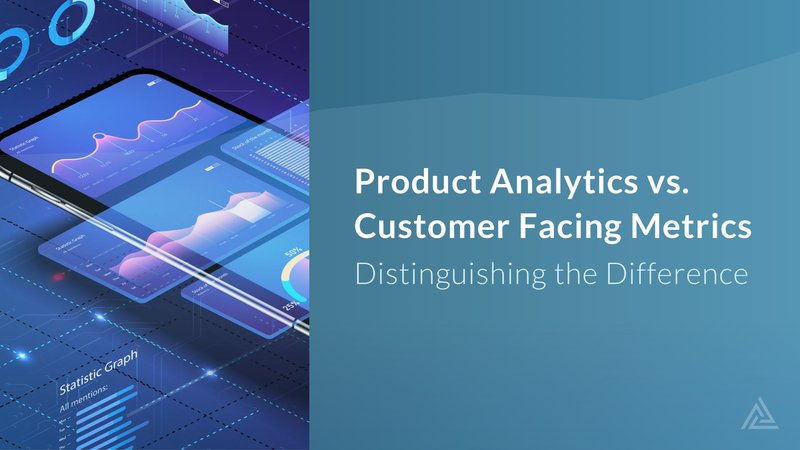
If you aren’t implementing customer-facing metrics in your software programs, you could be losing customers to a competitor who is. External customer analytics and product analytics are the same right? Not exactly. We’re explaining the distinction below, so let’s jump right in.
Product analytics are metrics that companies use internally to get a true view of usage and interaction. Effectively, these data-driven insights provide companies with information on how their users are engaging and interacting with their products.
On the other hand, customer-facing metrics, also referred to as embedded analytics, are accessible by the customer. They provide end-users with personalized data that is seamlessly delivered through the front-end experience. This information showcases the software’s value, differentiates the product, and improves the user experience.
Consider fitness wearables as an example. The internal product analytics for something like a Fitbit, Garmin Vivosport, Samsung Gear Fit2 Pro or similar band would tell the development team how many people are using their product. The company would have insights as to the number of units sold, the number of units being used at any given time, and perhaps even details such as where the item was purchased and how it was paid for.

Customer-facing metrics for fitness wearables tell the person that is actually wearing the product (the end-user) all the personalized information they want to know. If they want to analyze things such as how many steps they walked in a day, the number of calories they burned in a given time period, or even access information related to their sleep patterns – all the end-user has to do is wear the product and allow it to track their data.
Then, at the end of the time period being measured, they can log in to their user profile and access all the pertinent details related to their health. Rather than opening several apps and tracking individual metrics with more than one piece of software, everything they want to know is visible and understandable via one customer-facing dashboard. With this visual dashboard, they can gain insights into their own unique patterns, which assists them in making better, healthier decisions regarding their weight, sleep, and physical health overall.
Therein lies the power of customer-facing metrics. While product analytics are great for data-driven insights, customer analytics is how you set your product apart and increase revenue through the value you provide. Whether your software provides embedded analytics related to health, finances, marketing, or something else entirely, giving your end-user access to the data they track efficiently grants them the ability to make better decisions for themselves.

How Can You Implement Customer Facing Metrics in Your Software?
You could spend countless hours and resources developing an embedded analytics solution for your software from the ground up. You could hire engineers that are well-versed in customer analytics and tell them exactly what you want, and how you want it to be displayed for your end-users. Then, the project could take longer than you planned or budgeted for. Or worse you could end up with a lackluster product analytics platform that only helps you and doesn’t help your end-users.
The better way? Work with Keen to develop your customer-facing metrics and dashboards faster and easier than you can imagine. We’ve perfected the process of putting your software’s event data to work for you and your end-users. Click here to learn more about how to deliver the in-product analytics your customers want and with minimal development time.



